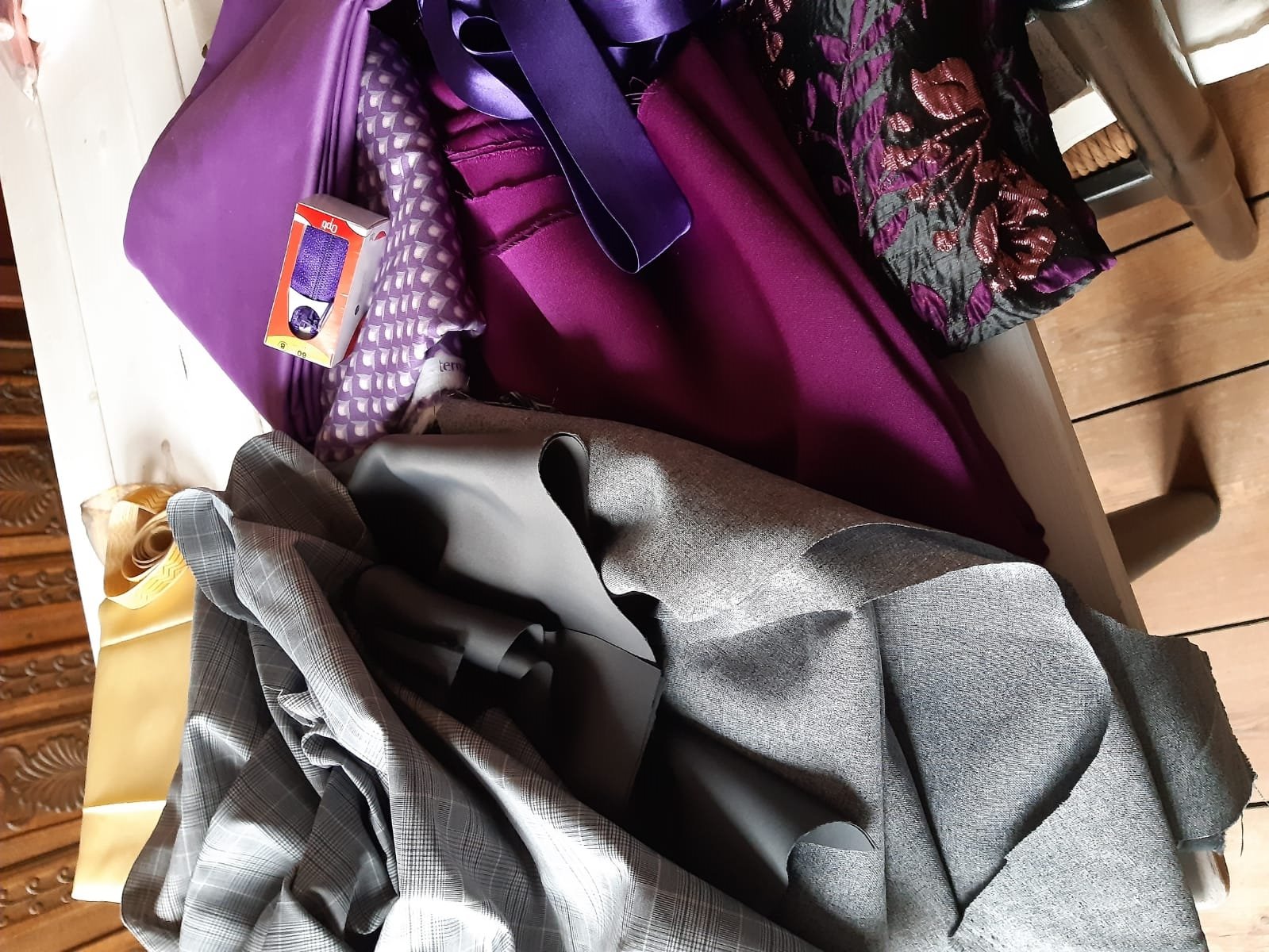The director of our upcoming show Sense and Sensibility, Lexi von Hoffmann, is a woman of a vast array of talents – you have to be when you decide to lead a cast of fifteen plus a crew of even more through months of rehearsals – one of which is: sewing! Which came in more than handy when her assistant director came up with a brilliant, but work-intensive idea…
Fabric, fabric, fabric
One of the challenges in producing a Jane Austen play are the many characters and their shifting relationships. How do you make sure that the audience can keep track of who is who and who is connected to whom? This becomes especially tricky when there are actors playing several characters...
Assistant Director Jess Albiston – a visual artist besides being a terrific AD – came up with an inspired idea: colour-code the costumes! Let all the Dashwoods be in shades of beige; all the Ferrars in purples, the happy Middleton/Jennings clan in cheerful yellows, and the mysterious gossips in grey (not quite fifty, but various shades...).
The fearless Barbara Möller who finds our costumes for us rifled through our costume collection and found some that fill the bill, but not all that we need by far.
So, I have been spending my time inundated in greys to make costumes for the gossips, and am now happy to be moving on to purples for the Ferrars, to be followed by yellows and one beige creation.
My apartment is covered in pins that have escaped the material and bits of yarn and material, but progress is being made!
Lexi von Hoffmann






